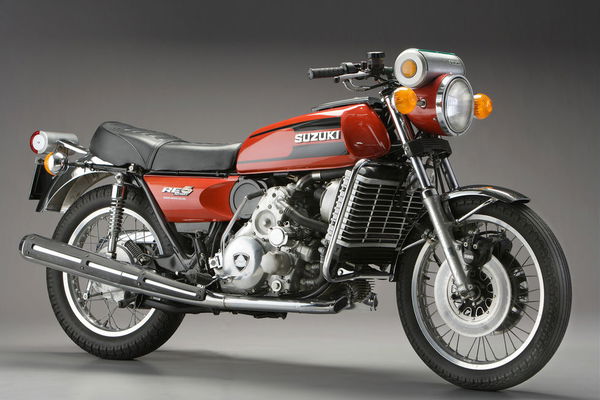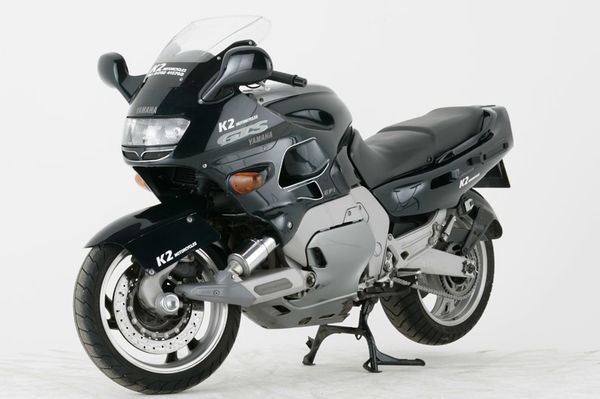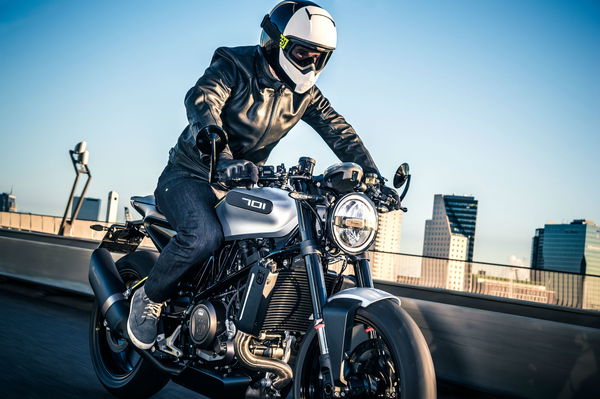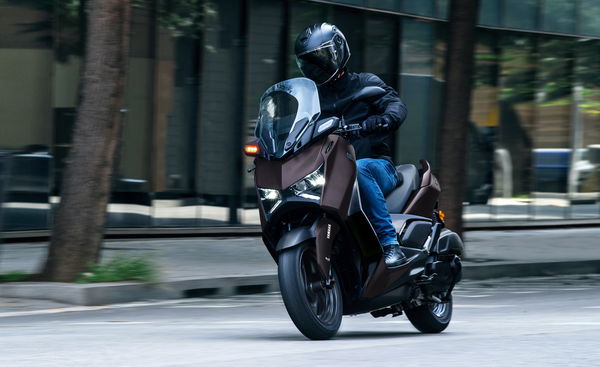Top 10 brilliant motorcycle innovations that never caught on
They could have changed motorcycling forever. But they didn’t.

YAMAHA would be forgiven for experiencing some nerves at the moment. Having revealed its MT-09-powered NIKEN three-wheeler, it now faces the task of getting some motorcyclists to embrace the idea by buying it.
When the Niken was shown at a press conference in Milan earlier this month, it seemed clear that the firm sensed a potential challenge ahead. Yamaha Europe's Chief Operating Officer Eric de Seynes ended the press conference by saying: “Please, please, please, test it, try it. You will discover another way of riding and it is fantastic... never judge it before to test it. Please.”
It probably is brilliant to ride - but are we ready for a third wheel? We (and Yamaha) will find out soon enough. In the meantime, here are 10 other revolutionary motorcycle ideas that drowned in a sea of conformity:

10: Hub-centre steering
If there was a template for concept bikes, the first thing on the must-have list would be hub-centre steering. It’s been endlessly touted as the ‘solution’ to the problems of telescopic forks, separating braking and suspension forces and theoretically allowing better setups. Bimota’s Tesi and Yamaha’s GTS (pictured) are the notable production examples of the idea, but it’s never caught on in the mainstream. The closest it came was probably the Italjet Dragster scooter, which was a sales success with a single-sided, hub-centre-steered front end.
When those concept bike designers decide hub-centre front ends are clichéd, they usually turn to a single fork instead. Think Honda’s NAS or Xasis (two names for the same VTR1000-powered bike) or the 1997 FN-1. Or Suzuki’s Crosscage (pictured), for that matter. And there are others. The big jump to production came with the crazy Gilera CX125. We can see why they do it; just like a single-sided swingarm, a mono-fork can look great. But there really doesn’t seem to be any benefit to the idea.
They keep promising to make a comeback, and maybe they will when Suzuki gets its finger out and puts the Recursion concept into production. But at the moment turbos are another great motorcycling dead-end. In the mid-80s, all the Japanese firms thought it was the future. The Honda CX500 and CX650 Turbos, Suzuki’s XN85 Turbo, Kawasaki’s GPz750 Turbo (pictured) and Yamaha’s XJ650 Turbo all battled it out briefly before being canned well before the decade ended.
Erik Buell has never been short of ideas and he remains the undoubted champion of the rim-mounted disc brake, but with the end of his eponymous companies – first Buell itself, then Erik Buell Racing/EBR Motorcycles – the idea seems to have been buried for now. There’s logic to it, though. Faster bikes tend to use bigger-diameter discs to give their brakes more leverage, so why not mount the disc on the rim, with the caliper inside? Buell certainly believed it, and few riders ever complained about the system his machines used. Maybe a comeback is overdue.
For a few years the Wankel rotary was the next big thing in engine design. No reciprocating pistons mean they’re silky smooth, and they make huge power from a tiny package. Norton, Suzuki and Hercules all made production bikes. Van Veen sort of did (although production ended after just 38 were made). Both Kawasaki and Yamaha made Wankel prototypes, too. But eventually the whole idea of Wankel rotaries died away as firms struggled with emissions and reliability.
Back in the 1980s 4wd was the big thing for cars, so it was no surprise that bike manufacturers started to investigate 2wd. Suzuki made several prototypes and 2wd concept bikes, and by the 1990s Yamaha and Ohlins were deep into the development of a hydraulic 2wd system that would eventually emerge on the limited-production WR450F 2-Trac (pictured). It even tested it on an R1, though, and had ideas of a whole 2wd range of bikes. But the interest just wasn’t there. These days, American firm Christini is notable for its 2wd bikes and conversion kits, but the mainstream interest seems to have evaporated. Electric power could see the idea make a comeback, though, with cheap, powerful and light hub-mounted motors solving the ever-present problem of getting drive to the steering front wheel of a bike.
The two-stroke was once the dominant power format for bikes, and with good reason. Simple, compact and light, with a two stroke engine you could simply make a cheaper, faster motorcycle. But while many of us like the smell of burning two-stroke oil, pollution was always the stroker’s Achilles’ heel. Direct fuel injection promised to solve the problem. By injecting the fuel after the exhaust port closed, a stroker should have been just as clean as a four-stroke, while retaining its power, size and weight advantage. But in practise, despite years of effort, direct-injected strokers never really took off. A handful of scooters and, of course, the famously ill-fated Bimota V-Due (pictured) remain the DI two-stroke’s legacy.
Another thing that seems to be a piece of box-ticking for concept bike designers is the rear-view camera. Al Melling’s never-to-be Norton Nemesis (pictured) was supposed to have one. And even the new V4 from the Norton firm we know today is supposed to be getting one. But so far, production rear view cameras have never made the leap to mass production. The stumbling block is largely a legal one – type approval regs in most countries require mirrors, not cameras. But it’s also technical. Mirrors are cheap and reliable. They don’t need to alter their aperture to counter changing light conditions. And you can change your view in them by moving your head around. Cameras have a fixed field of view, don’t cope well with entering dark tunnels or having headlights shone into them, and cost much more than a piece of mirrored glass. In Japan there are moves afoot to make them legal as alternatives to mirrors, though, and if that happens then we might well see more of them in the future.
While electronically-adjusting semi-active suspension is all the rage at the moment, it’s not true active suspension. All the systems out there at the moment still use conventional springs and dampers, with the ‘active’ element restricted to altering damper settings. It’s adaptive, really – changing to suit the bike’s attitude and the way the suspension is moving – rather than truly active. In a true active set-up, there’s no spring or damper – the suspension is simply moved, usually by hydraulics, to ride seamlessly over bumps. It should combine Rolls Royce comfort with racer handling. It was the Next Big Thing in the 1980 and early 1990s, when huge strides were made to perfect the systems in F1 racing. Then it was banned from racing. It was a shame, as that was one system that really might have had a worthwhile trickle-down to road use. Many concept bikes of the period certainly showed it was a hot technology – notably Suzuki’s Falcorustyco (pictured).
Honda spent a huge amount of money developing the idea of hydraulic drive into a production ready technology. Then it launched it on one of the ugliest, weirdest and most ridiculously costly motorcycles it’s ever made, effectively guaranteeing the failure of both the bike and the hydraulic drivetrain that it used. That bike was, of course, the DN-01 (pictured). The hydraulic drive system was actually rather clever. A variable-angle hydraulic pump converted the engine’s rotation into the movement of fluid, which went down the swingarm to the rear wheel where there was a hydraulic motor turning the wheel. It’s a clever take on the twist-and-go CVT transmission idea, and offers huge flexibility of design, since two bendy pipes are all that’s needed to transmit the power. It was hard to make, though, and the DN-01 completely failed to illustrate any of the system’s advantages over other, cheaper, simpler and more familiar transmissions.
CLICK HERE FOR MORE VISORDOWN TOP TENS.











